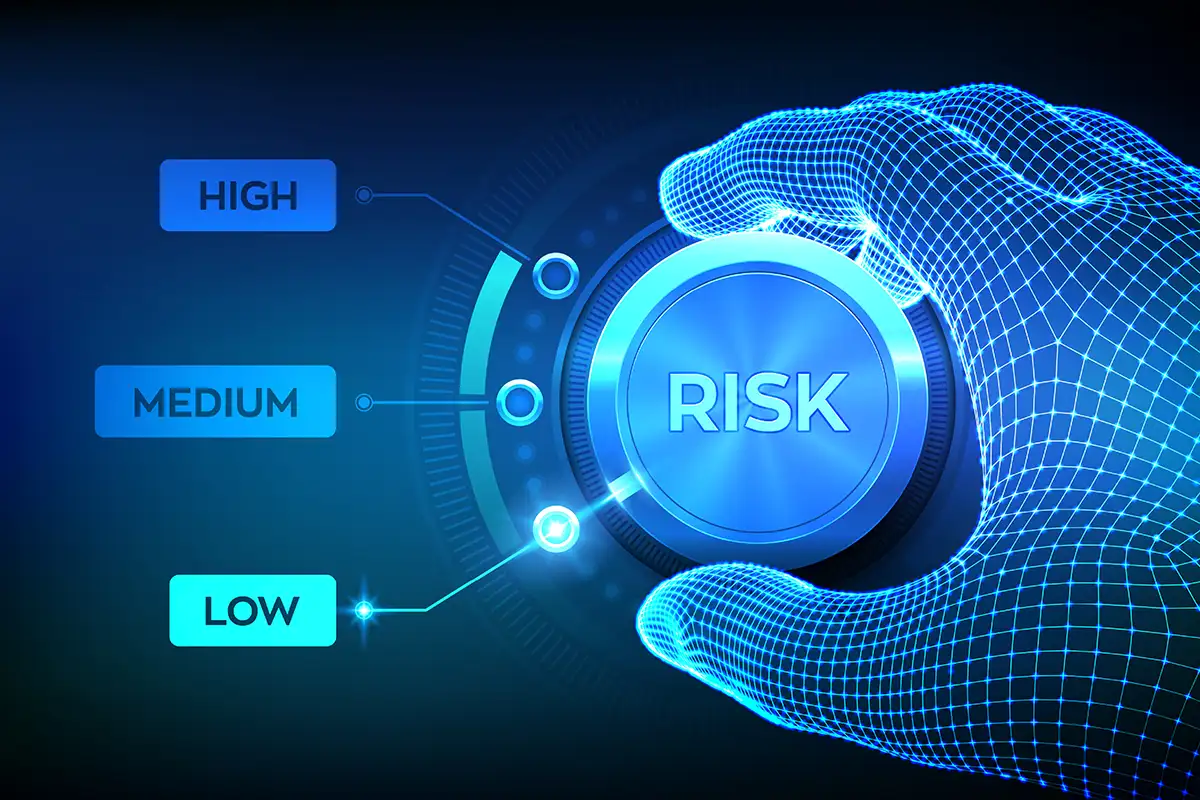How much does investment management cost? (+ examples)
You are scanning an investment firm’s website and looking at a few articles because you want to grow your money, increase your wealth, and reach your...

What exactly are you asking when you inquire about high-risk investments? On its face, the question seems straightforward enough.
🎬 WATCH: What Is an Example of a High-Risk Investment?
Perhaps you’ve come across an investment opportunity that sounds too good to be true and wonder if it’s just too risky. Or maybe you’re starting out, trying to pin down your risk tolerance without risking your entire savings. Or, you could be nearing retirement, seeking growth without excessive risk. Whatever your situation, you’re in the right place to find clarity.
Reflecting on my career in financial planning and investing, which stretches back to the 1990s—a time of desk smoking and cold calling—it's clear that the financial world has seen dramatic changes, something we’ve talked about quite a bit about in the past. In my time, I’ve witnessed everything from the tech bubble's rise and crash in the late '90s and early 2000s, to the global financial crisis and the tumultuous bond markets.
🔎 Related: Financial Planning Process Guide for Investors and Families
All these events have shaped my understanding of what “high-risk” truly means. Now, I’m going to share what I’ve learned through my decades of experience with you.
Together, we’re going to dive deep into the nature of high-risk investments. We'll explore real-world examples like the enigmatic cryptocurrency darling Dogecoin. We’ll also discuss the dangers of leveraging techniques such as short-selling, because high-risk investments come in many shapes and sizes. By the end of this article, you’ll have a solid understanding of what makes an investment high-risk and how to approach these investments with an informed, strategic mindset.
In the finance world, the academic definition of a high-risk investment is simply an investment that increases your possibility of experiencing investment loss, i.e., you lose money. But at Sound Financial, we see it differently. We define risk as the possibility of not achieving your financial goals. It's about whether an investment helps or hinders your journey towards those goals.
🔎 Related: What Are the 4 Risks of Investing? (+ Examples)
Remember, money is just a tool—it's not the scorecard by which you measure your success, and it’s certainly not the ultimate goal you should be looking to achieve. The wealth you accumulate should be in service of a greater vision you are trying to build for yourself, your business, your family, and/or your loved ones.
As I often say, “Risk is the possibility of you not reaching your financial goals.” This reframing helps us focus on long-term outcomes rather than short-term fluctuations.
Risk in investment can take many forms. It’s not only about the potential of losing money; it's also about the opportunity cost. What could your money have been doing instead? Every investment carries risk, but high-risk investments have the potential to derail financial plans if not managed properly.
I know this is going to hurt some of your feelings, because I consider the specific example I’m about to share to be one of the stupidest ideas under the sun. It’s not that I’m against cryptocurrencies entirely. Although, yes, when they first came out, I thought to myself, “This sounds like something out of a movie or a fever dream from Silicon Valley.”
🔎 Related: How Does Sound Financial Make Client Investing Decisions?
But I want us to look at Dogecoin, which started as a joke—a cryptocurrency represented by a meme of a dog:
Image Source: CNN
Despite its humorous beginnings, Dogecoin caught the world's attention, especially during the COVID-19 pandemic, becoming a significant speculative phenomenon.
Here’s where it gets tricky, though. Yes, you could make some really nice money at times in it, but what’s the value? Tell me, what is the underlying goodness of this? What are you going to do with it? It creates nothing. It does nothing. It provides nothing. Dogecoin is not an asset until the market says that it is.
Now, for a little while, the market did just that:
But after the initial craze of the Dogecoin died down, we saw a significant cooling effect on how its value was perceived in the market. Regardless as to whether or not you agree with my sentiments about Dogecoin, Dogecoin still serves as a perfect example of the unpredictability and speculative nature of high-risk investments in the space of cryptocurrency.
Dogecoin illustrates how a “joke” can turn into a serious investment for many, highlighting the emotional and irrational forces that often drive high-risk markets. This surge in Dogecoin's popularity, driven by social media and celebrity endorsements, shows the highly volatile nature of such investments—one day you’re on top of the world, and the next day you’re counting your losses as the market’s attention has been captured by a new fad … or simply moved on.
🔎 Related: What Are the 4 Different Types of Investment Funds?
That means investors like you must be prepared for the possibility of both dramatic gains and equally significant losses with “opportunities” like Dogecoin. Yes, the fear of missing out can be strong, leading us to make emotional decisions about our investments, but we have to be careful letting “FOMO” drive our investment choices. This type of investment challenges traditional investment strategies and requires a keen understanding of market sentiment and investor behavior.
Let’s take a look at another cautionary tale from recent memory. Going into 2021, it was clear as day to anyone looking at the books that GameStop was on the verge of going bankrupt. So, in early 2021, a hedge fund (betting on GameStop’s continued decline) shorted the stock, i.e., putting it into a “short squeeze.” (If you’re unfamiliar with “shorting,” it means borrowing shares of a stock you believe will decrease in value, selling them at the current market price, and then buying them back later at a lower price.)
Now, this is where things get interesting. You see, these events unfolded while many folks were still at home during the COVID-19 pandemic. And a group of retail traders from the online forum Reddit—more specifically, the subreddit r/WallStreetBets—decided they didn’t like the hedge fund’s attempts to short GameStop.
🔎 Related: How Much Does Investment Management Cost?
So, what did they do? They drove up the price, causing devastating losses for the short-sellers. That is, those short-sellers were expecting the stock to go down, and they borrowed money to short it. As it's going down, the stock price goes up and now they're over a barrel. Personally, I find this hysterical, because it’s a score one for the little guys, and I have no love lost for the guys on Wall Street.
However, the mistake the hedge fund guys made was not shorting GameStop; that was a good investment. This event underscores how important it is to know what you’re doing before you start shorting. Yes, these hedge fund folks knew what they were doing, and they did it correctly, and they stood to gain a lot of money. They just didn’t manage their risk.
The highest risk investments are those where you don't manage your risk. What does risk management look like for you? Well, it depends.
What is your tolerance for investment losses? How much of a loss can you sustain financially? How much of a loss can you sustain emotionally? These are the questions you need to answer for yourself, as an investor. These are the questions we ask our clients, before we develop and execute their investment strategy, because only they can decide what their true risk tolerance is for themselves.
🔎 Related: What’s the Difference Between Real Assets + Financial Assets?
The same holds true for you. Only you can answer those questions. It’s about understanding how much risk you can comfortably take on while still achieving your financial objectives. It’s not just about the potential returns but understanding the full spectrum of possible outcomes and preparing for them effectively.

You are scanning an investment firm’s website and looking at a few articles because you want to grow your money, increase your wealth, and reach your...
{% video_player "embed_player" overrideable=False, type='hsvideo2', hide_playlist=True, viral_sharing=False, embed_button=False, autoplay=False,...

1 min read
Some AT&T employees in certain cities may have questions in their future With all the changes happening in the telecom industry it is...